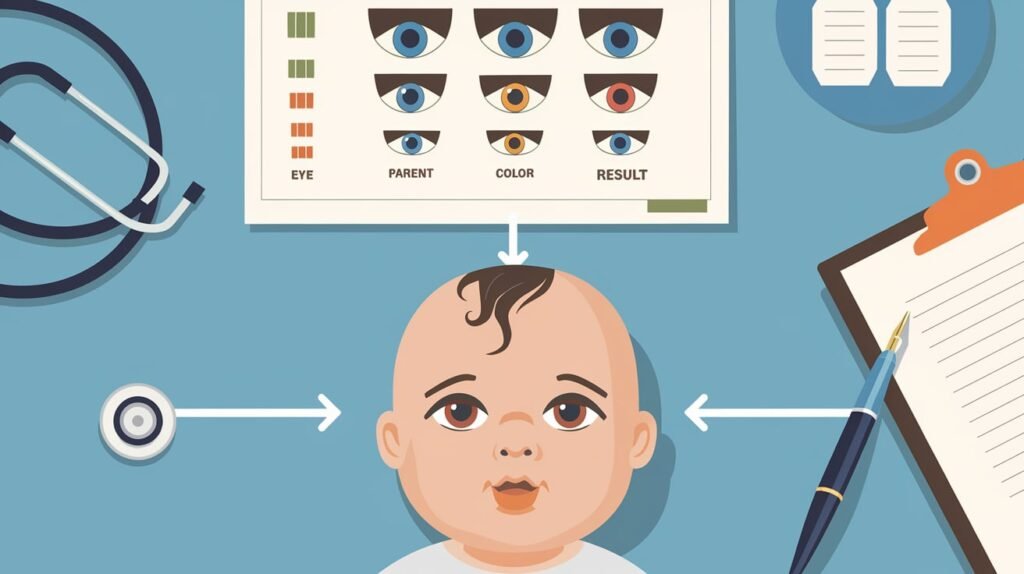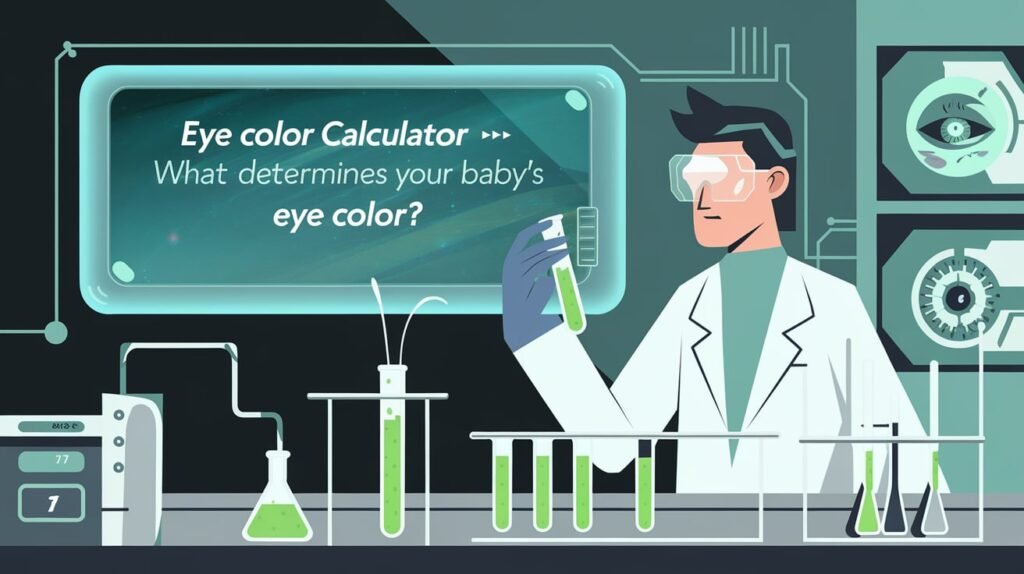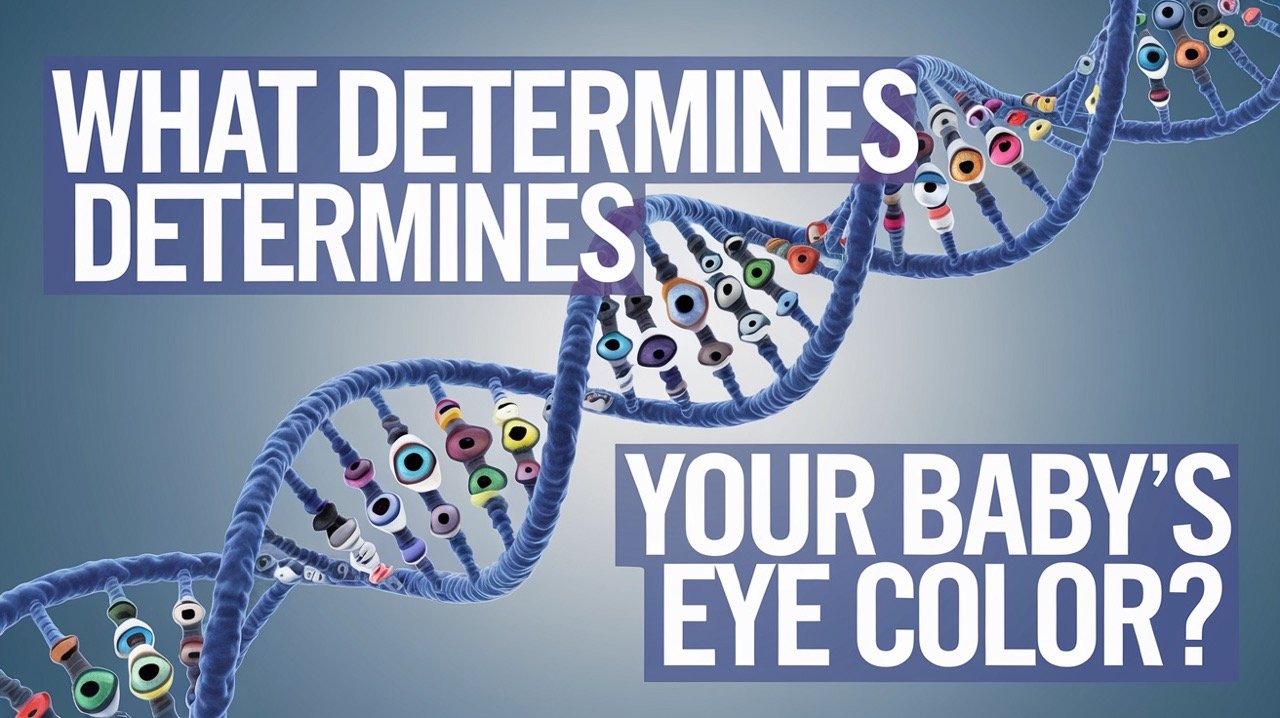Have you ever wondered what color eyes your baby will have? As parents-to-be, it’s exciting to imagine your child’s features—especially their eyes. The good news is that with a little help from genetics, you can make an educated guess! Using an eye color calculator can help predict the likelihood of your child inheriting certain eye colors based on the eye colors of both parents. Let’s dive into the fascinating world of genetics and discover how these traits are passed down.
Find Out What Eye Color Your Baby Will Have with This Fun Calculator
Eye Color Calculator
Chances of Brown Eyes: 0%
Chances of Blue Eyes: 0%
Chances of Green Eyes: 0%
The Genetics Behind Eye Color 👁️

Eye color is more than just a cosmetic trait; it’s determined by complex genetic factors. Understanding how these genes work together can help explain why your child may end up with striking blue eyes or deep brown ones.
Dominant and Recessive Traits
The key to predicting eye color lies in dominant and recessive genes. In general, darker eye colors like brown are dominant, while lighter colors such as blue and green are recessive. This means that if one parent has brown eyes (a dominant trait) and the other has blue eyes (a recessive trait), the child is more likely to have brown eyes. However, it’s not always a straightforward 50/50 split!
Eye color is influenced by multiple genes, so it’s possible for two brown-eyed parents to have a blue-eyed child if both carry the recessive blue-eye gene. Genes from grandparents can also come into play, making the predictions fun but never 100% certain.
The Role of Melanin in Eye Color
Melanin is the pigment responsible for the color of our eyes, skin, and hair. The amount of melanin in the iris determines eye color. Brown eyes have the highest concentration of melanin, followed by hazel, green, and blue eyes, which have very little melanin.
The gene that regulates melanin production is passed down from parents to their children, which is why eye color tends to run in families. However, the amount of melanin can vary, which is why siblings can have different eye colors even with the same parents!
How Does an Eye Color Calculator Work? 🖥️
If you’re curious about the potential eye color of your baby, an eye color calculator is an excellent tool. It’s simple to use and gives you a glimpse into the genetic lottery your child might win.
The Basics of Using an Eye Color Calculator
Most eye color calculators work by asking you to input the eye colors of both parents. Some advanced calculators also consider the eye colors of grandparents for a more accurate prediction. Once you input the data, the calculator uses known genetic probabilities to estimate the likelihood of different eye colors.
For example, if both parents have blue eyes, the calculator might predict a high probability that your child will have blue eyes as well. If one parent has brown eyes and the other has blue, the calculator will likely give a percentage for both blue and brown eyes.
Understanding the Results
After entering your information, the eye color calculator provides you with a percentage breakdown of possible eye colors. For instance, it might say there’s a 75% chance of brown eyes, a 20% chance of green, and a 5% chance of blue. While this is a fun and useful tool, remember that genetics can sometimes surprise us!
Even with all the data, these calculators are best used as a guide rather than a guarantee. Your child’s final eye color could still be a mystery, and that’s part of the excitement!
Other Genetic Traits You Can Predict 👶
Eye color isn’t the only trait that parents are curious about. Many other characteristics are influenced by genetics, and modern calculators can give insights into these as well.
Beyond Eye Color
In addition to predicting eye color, some tools allow you to explore other inherited traits, such as hair color, height, and even the possibility of having twins. While hair color can be predicted in a similar way to eye color using dominant and recessive genes, the probability of having twins is more complex. Curious? You can try out the Probability of Having Twins Calculator to learn more about your chances of welcoming double the joy!
Why Eye Color Might Change Over Time 🌈

One of the most surprising things about eye color is that it can change, especially in the first few months of a baby’s life. If your newborn has a different eye color than expected, don’t worry—it’s quite common.
Baby’s Eye Color at Birth
Many babies are born with blue or grayish eyes, which often change as they grow older. This happens because melanin levels increase over time, leading to darker eye colors. The production of melanin in the iris is not fully activated at birth, which is why newborns often have lighter eyes, even if they will eventually develop brown eyes.
Environmental Factors
Eye color changes aren’t just due to genetics—environmental factors like exposure to sunlight can also influence melanin production in the eyes. In some cases, eye color can subtly shift over time. Although rare, it’s possible for some individuals to experience changes in their eye color due to age or health conditions. However, the most significant changes usually occur in the first few years of life.
Conclusion
Predicting your baby’s eye color can be a fun way to explore the fascinating science of genetics. By using an eye color calculator, you can get a good idea of the possibilities—but remember, genetics always has room for surprises! Whether your child ends up with sparkling blue eyes or deep brown ones, the process of discovery is part of the joy of parenthood. Why not give the calculator a try and see what the odds say? Just keep in mind that even the most advanced tools can’t account for every genetic twist and turn!
FAQ
What are the chances my baby will have blue eyes?
If both parents have blue eyes, there’s a high likelihood your baby will have blue eyes as well, though there are still small chances for other colors due to genetic variations.
Can both brown-eyed parents have a blue-eyed child?
Yes! If both parents carry a recessive blue-eye gene, they can still pass that on to their child, making blue eyes a possibility.
How accurate are eye color calculators?
Eye color calculators provide educated guesses based on genetic probabilities but aren’t 100% accurate. The final eye color may still surprise you!
What causes eye color to change after birth?
Eye color can change due to increased melanin production in the iris, especially in the first few months or years of life.
Can you predict hair color in the same way?
Yes, hair color is also influenced by dominant and recessive genes, and calculators exist to predict this as well, though it’s similarly complex.
What if my partner and I have different eye colors?
The calculator will give you a breakdown of probabilities for each color, based on the genes both of you carry.
Is it true that eye color affects vision?
Generally, eye color does not impact vision, although some studies suggest that lighter eyes may be more sensitive to bright light.
